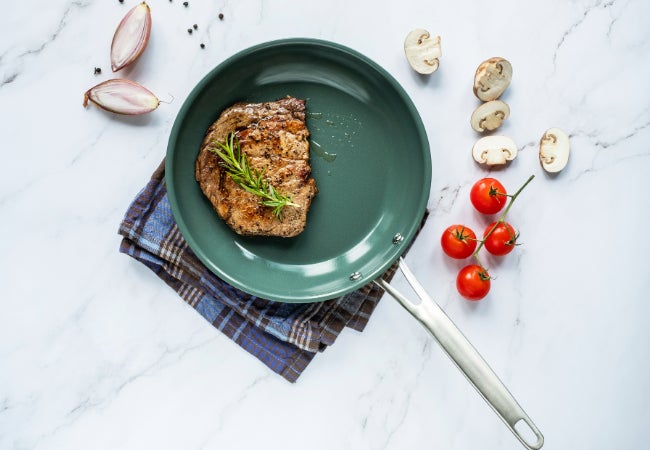With countless cookware options on the market today, one type stands apart in popularity and market dominance: non-stick cookware. Accounting for nearly 62% of global retail consumer cookware sales, it’s clearly a favorite among home cooks.
For over 60 years, traditional non-stick cookware has primarily relied on PTFE (Polytetrafluoroethylene) coatings, valued for their excellent food release and long-lasting durability. However, increasing regulatory restrictions on PFAS (per- and polyfluoroalkyl substances) materials, a category that includes PTFE, are accelerating a shift toward alternative sol-gel “ceramic” non-stick coatings.
The Evolution of Non-Stick Cookware
At PPG, we recognize that sol-gel non-stick coatings may have different performance characteristics compared to traditional options. That’s why we are continuously innovating to enhance the durability and non-stick properties of our sol-gel coatings. Our research and development efforts also focus on developing testing methods that more accurately reflect real-world home use, enabling us to better evaluate and substantiate the improvements we make.
Through ongoing innovation and rigorous testing, we aim to deliver non-stick solutions that meet both regulatory requirements and consumer expectations for quality and performance.

What is Sol-Gel Technology?
Sol-gel non-stick coatings are a type of coating made through a chemical process that transforms a solution (sol) into a solid gel, which is then heat cured to form a ceramic-like film. They are known for their excellent hardness, strong adhesion and chemical resistance.
While sol-gel coatings have been used for centuries in various industries, they weren’t adapted for cookware until the 1990s.
By incorporating materials that reduce surface energy, sol-gel chemistries can be engineered to have non-stick properties and several advantages over traditional PTFE coatings, including scratch- and heat resistance, strength and specifically formulated without PFAS.
But how do cookware manufacturers ensure that their products are made to withstand the demands of today’s busy home kitchens? The answer is product testing.
Ensuring Durability: The Importance of Rigorous Testing
Unlike many other industries, consumer cookware lacks standardized and widely adopted testing methods. As a result, manufacturers and coating partners develop proprietary testing protocols to evaluate product performance and durability.
As a coating provider for many leading brands, PPG has developed some of the most rigorous testing protocols for both commercial and consumer cookware. These tests were first developed by Whitford, a global leader in non-stick and low-friction solutions that PPG acquired in 2019.
In a previous blog, we discussed some of the tools used to evaluate our traditional PTFE non-stick coatings, including the dry egg, mechanical stress and LGA shaker tests.
Sol-gel coatings, however, require different protocols since thermal stress and chemicals, not abrasions and scratches, are the biggest cause of failures.
One proprietary test used by PPG to evaluate non-stick durability is the Accelerated Home Cooking Test (TM199X), developed to simulate years of home kitchen use in a very condensed timeframe.
While most standard cookware and bakeware tests assess a singular performance factor like heat- or abrasion-resistance, the multifaceted Accelerated Home Cooking Test measures heat, wear and chemical resistance, setting a new testing benchmark in the industry.
How the Accelerated Home Cooking Test Works
While the specifics of this test vary, some common practices involve subjecting the cookware to repeated cooking cycles with a variety of foods such as celery and butter, chicken, steaks, tomato sauce, omelets and pancakes. The process includes frequent heating and cooling, cleaning with sponges and dishwasher cycles, plus exposure to various oils, acids and utensils for stirring and scraping.
Throughout the testing, cookware is evaluated for coating degradation, discoloration and loss of non-stick performance, as well as resistance to thermal heat and chemicals.
The data collected is invaluable in helping manufacturers determine if their cookware meets customer expectations for durability and quick release (key for fewer product returns), complies with regulatory and warranty requirements, and supports marketing claims.
